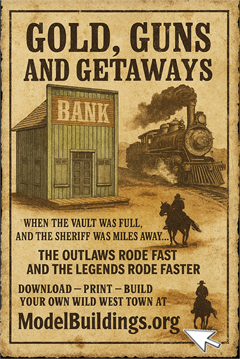Everything on model trains, model railroads, model railways, locomotives, model train layouts, scenery, wiring, DCC and more. Enjoy the world's best hobby... model railroading!
HO Loco Control DCC and Non-DCC
Werner asks others for advice:
“Being a novice, I would like to know exactly what options I have with my layout. I have both DCC locomotives as well as non-DCC. I am planning to split my track (separate control) and run non-DCC on one circuit and DCC on the other. My experience being limited, I have read where the DCC loco can go onto non-DCC track but not vica-versa. Also it can’t run indefinitely on the DCC side. Any and all info on this subject is appreciated.”
Add your suggestions below.
4 Responses to HO Loco Control DCC and Non-DCC
Leave a Reply















I recently bought a DigiTrax Zephyr. Reading through the manuals last week I do believe that you can run either DCC or non DCC using the DigitTrax system. I’d check out their website for further info. I JUST got my track laid today and fired it up. The DigiTrax system in my opinion was very easy to set up and use. As far as programming some of the CV’s I haven’t learned that yet, but will in time.
Hope this helps you a bit.
You can install a switch so you can run them with DCC and when you swith they will run without DCC, other and better Option is to buy a MRC DCC control that include running both sistems I have one and is perfect.
When considering a question such as you have posed, I think what you should do is go back to the basics . . . . what is it that the electrical equipment is actually doing when you’re pushing buttons and twisting knobs, what is it that you want to do and is what you’re doing really a logical thing to do.. Consider the regular DC controller connected to your layout. With the controller switched ON and the speed control knob rotated to ZERO the loco on the track is motionless. If you connect a voltmeter to the track it’ll read ZERO. As you rotate that speed control knob you can see that the voltmeter will read higher and higher volts and the loco will go from slow to fast and faster. Now, consider the DCC controller. With the controller ON and the speed at ZERO the loco is still motionless, but take a look at that voltmeter. HOLY SMOKES! It’s reading somewhere between 12 and 16 volts and the loco isn’t going anywhere! How is that possible? That’s because the speed controller is inside the loco, not the electronic box in your hand. As you increase the speed of the loco, you will not see any change on the voltmeter. The speed controller in the electronics package inside the loco will see and understand a signal sent through the tracks from the electronic box in your hand. Now, put your DC loco on the tracks of a DCC system and it will race as fast as it can all the time because there is max voltage to the tracks at all times. Put your DCC loco on the tracks of a DC system. It’ll run but not as well as a DC loco. There may be some ramifications to this but, alas, I’m not an electronics engineer. I do hope this helps you see things a bit clearer.
Bachmann’s Digital Command Controller will operate 9 DCC and 1 DC engine.
Hope this helps